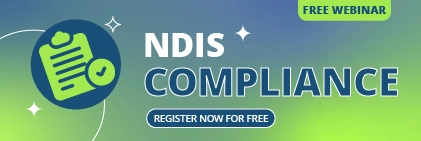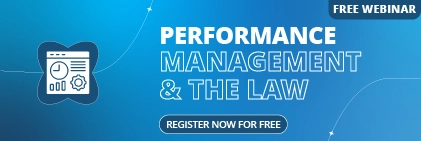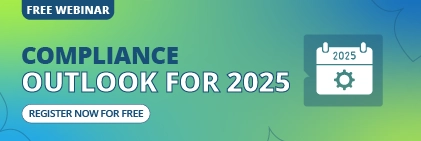Whether you’re an HR manager, struggling with a backlog of compliance challenges, or a business owner trying to protect your bottom line, enterprise risk management (ERM) has you covered. Understanding this framework can make the difference between surviving and thriving. With threats like cybersecurity breaches and fraud becoming all the more common nowadays, having a secure enterprise risk management framework for dealing with these types of situations can make a huge difference for your business.
What is Enterprise Risk Management (ERM)?
Enterprise Risk Management (ERM) is a fully fleshed-out strategic approach to managing risks that threaten your business goals and operations. As an organisation wide framework, ERM is able to identify and assess threats more holistically than other, less flexible frameworks. Instead of isolating risks by department, ERM can connect HR issues such as employee turnover to broader perspectives such as market shakeups. This lets HR spot employee-related risks early, while business owners are free to focus on business growth and credibility. By noticing and responding to risks early, your business is able to get a leg up over your competitors, translating into huge potential growth opportunities rising in the future.
Why ERM Matters for HR Managers and Business Owners?
A lot of managers have heard about enterprise risk management before, but many simply don’t care about it. This could be the greatest mistake that you, as a business owner, will make. Enterprise Risk Management (ERM) is your shield against the chaos of the world around us. It helps you deal with localised risks like compliance fines or industry-wide threats like high turnover. Business owners need ERM to protect their business, their profits, and their people.
It’s often most relevant for HR managers and business owners as they’re the ones with the best view of the company as a whole. As we mentioned earlier, risk management systems work best when applied throughout the business, and so those who have that unique view are best positioned to implement ERM properly. The improvement in efficiency alone is more than worth it, with countless hours no longer hunched over vague spreadsheets and unrelated datasets. Instead, it’s all streamlined through an efficient risk management system that sorts your data and generates reports automatically.
Key Components of an Effective Enterprise Risk Management Framework
An effective Enterprise Risk Management (ERM) framework hinges on five core pillars that each work together:
- Risk Governance: Sets the rules and roles for risk management.
- Risk Identification: Pinpoints threats and opportunities.
- Risk Assessment: Weighs likelihood and impact.
- Risk Response: Decides how to handle each risk.
- Risk Monitoring: Keeps tabs on risks over time.
These pillars all work together to wrangle a chaotic environment into a controlled and steady workplace, adjusting to whatever your business needs. Let’s go over them in more depth, and break them down to their roots.
1. Risk Governance
This is what all ERM is built off of. Risk governance is about keeping people accountable, and making sure the business is making healthy, informed decisions. Typically, this is for the top management team, but HR managers and the general staff team also play into it. This shares a lot of similarities with a GRC system, but is unique in that it focuses purely on governance.
This allows us to really drill down on core issues in the business, and seek out the best way to either fix these issues, or work around them in order to maximise business operations. By blending risk with policies and strategy, you can ensure that ERM flourishes. Hot tip: link risk accountability to an incentive system. Employees engage more when they’re recognised for spotting issues!
2. Risk Identification
You can’t manage what you don’t notice. This is all about spotting those hidden threats and opportunities before anyone else. Tools like a SWOT (strengths, weaknesses, opportunities, and threats) analysis can help locate talent gaps in your workforce. Uncovering risks can also be a great team-building activity, for all departments. HR can flag employee burnout earlier, while owners keep an eye on any future market risks. Proactive risk identification turns patience into your strength.
3. Risk Assessment
This really tries to burrow deep into each risk’s odds and impact. Group simulations can help you prioritise and manage potential risks. HR can assess gaps in compliance, while other managers focus on their respective departments. These risk assessment techniques can bring clarity to your business. They let you focus your efforts on what’s important.
4. Risk Response
Now that you’ve identified and assessed your risks, it’s time to get to work. You need to choose how to best move forward. The most common choices are avoiding, mitigating, transferring, or accepting the risk. These all have their own pros and cons, and it’s up to you to evaluate them with your specific business and industry in mind. Anything that impacts customer privacy is a big risk, and should be avoided at all costs, but smaller threats like a wire on the floor, potentially causing a tripping hazard, isn’t nearly as serious.
5. Risk Monitoring
Monitoring involves the use of data tracking and analytics tools to stay aware of your risks and responses. Regular audits help you notice if anything is amiss, and keep you nimble. Stay alert for sudden spikes and respond quickly, there’s no point in monitoring your risks if you’re too slow to act on them.
6. Building a Risk-Aware Culture
Enterprise Risk Management (ERM) isn’t just about policies, it’s also about people. A risk aware culture means everyone in your company, not just the managers or leadership team, tries to stay aware of risks. Training is the most core component here, alongside communication. The best way to handle this is to integrate it into your onboarding procedure, and to lead by example.
Quick Takeaways on Culture:
- Train teams to spot and report risks.
- Encourage open dialogue about challenges.
- Reward proactive risk ownership.
- Make risk awareness part of daily work.
7. Enterprise Risk Management (ERM) Tools and Software
Technology can make ERM easier. Tools like Sentrient’s Risk Management System can help. They make tracking and reporting simpler. HR can check if rules are being followed. Owners can get important information to make decisions. It’s very important to choose tools that fit your business size. Sentrient’s software works for all kinds of businesses, big or small. ERM tools help managers do more. They don’t make things too complicated to set up or use.
8. Steps to Implement Enterprise Risk Management (ERM)
A basic overview of the roadmap can help to break down the implementation process into bite sized chunks. First of all, make sure leadership is on board with the idea. They’ll be the driving agents of change, so they need to be fully dedicated and understand the benefits and process of enterprise risk management framework. Map out what your business is facing right now. An assessment of current risks will highlight exactly why it needs to be implemented. Once you’ve done this, choose your risk management system. Picking Sentrient lets you tailor ERM to your needs as you build and manage the framework. Then, train your teams with the courses offered by Sentrient, and adjust your processes over time as you gather results data from your team.
9. Measuring Enterprise Risk Management (ERM) Success
How do you know the system works? You’ll need to track certain metrics. Risk reduction rate is an obvious, but solid pick. If your threats aren’t shrinking, either somethings gone wrong, or you haven’t been looking hard enough in the past. Check your compliance rates and cost savings. If you’re lucky, there won’t be anything that needs fixing, but odds are that some new regulation slipped by your radar, and you haven’t noticed till the ERM system alerted you. Also check on your employees and customers. Your key stakeholders need to be confident and trust you. If they aren’t, a revaluation needs to be done to better understand how and why your people are thinking of you in a certain way.
Common Enterprise Risk Management Mistakes to Avoid
Lack of leadership support, isolated teams, and overcomplicating the process are all extremely common traps that can actively work against you. So long as you follow the steps we’ve outlined, your business will thrive. If somethings gone wrong, the best way to gather back your momentum is to investigate and find out what mistake has occurred, and put in place measures to ensure it doesn’t happen again. Learn from both your own, and your competitors mistakes, to get the upper hand.
Pitfalls Summary:
- Get leaders to champion ERM.
- Break down silos for full visibility.
- Keep processes simple and clear.
- Focus on people, not just plans.
- Refresh ERM regularly.
Quick Takeaways:
- ERM tackles risks across the whole organisation.
- Core components: governance, identification, assessment, response, monitoring.
- Culture makes ERM a team effort.
- Tools boost efficiency, so choose wisely.
- Measure success with clear metrics.
- Avoid pitfalls like silos or neglect.
Conclusion
Enterprise risk management framework is the best tool when faced with uncertainty in the workplace. Nowadays, that’s all the time. Protecting your people and profits should always be one of your top priorities, and you can only perform at your peak with the right equipment. By using the pillars of governance, identification, assessment, response, and monitoring, you can ensure sustainable growth for the business, alongside talent and compliance. Risk-aware cultures need to be fostered, and it all starts with you. Start today, and take the reins. Assess your risks and deploy ERM step by step. Your organisations future may just need it.
FAQs
1.What is enterprise risk management?
ERM is a strategic method to spot and manage risks across your organisation. It keeps you on track and keeps disruptions at bay. Understanding enterprise risk management will prepare you for anything.
2. How does ERM benefit small businesses?
It catches cash flow or talent risks early, saving money and stress. ERM for small businesses on a budget builds trust and cuts chaos for steady growth.
3. What are the first steps in implementing ERM?
Start with leadership buy-in—they must lead the charge. Key ERM implementation steps for success begin with a committed top team.
4. Which ERM tools are best for HR managers?
Try Sentrient, simple and scalable. ERM tools for HR managers track compliance and employee risks with ease.
5. How can I measure the effectiveness of my ERM framework?
Look at risk reduction, cost savings, and team buy-in. Measuring ERM effectiveness with metrics shows what’s working and what’s not.
Read More About Risk Management System:
- 9 Steps to Develop an Effective Risk Management Strategy: Key Steps and Best Practices
- 9 Key Components of an Effective Enterprise Risk Management Framework
- Implementing Risk Management Software: 5 Essential Steps in a Step-by-Step Guide
- Top 10 Questions to Ask Before Choosing Risk Management Software
- How Can a Risk Management System Improve Compliance and Security





